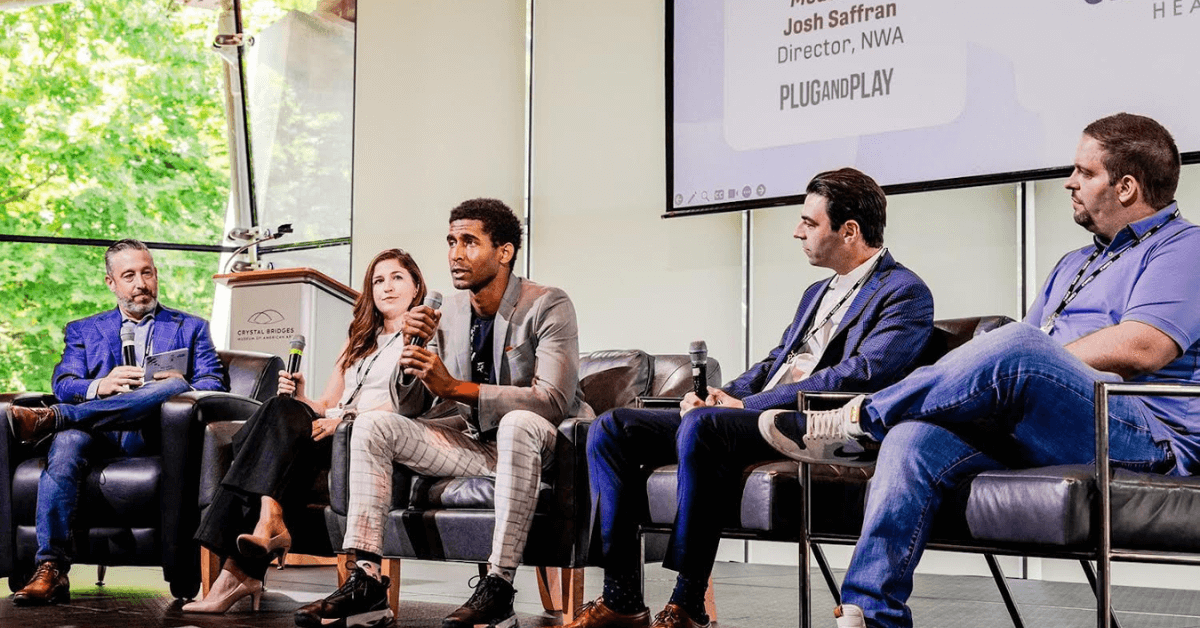Discover how strategic capital, impactful hiring, and innovative customer acquisition strategies are propelling Sober Sidekick forward.
Could you walk us through the recent capital raise at Sober Sidekick? What were some of the key milestones or challenges you faced during the process?
In November 2023, we (the Sober Sidekick team) received feedback from our investors that we should build our sales team to double down on our ability to engage the substance use recovery community better than anyone and the traction we were getting with health plans. So, our fundraise was primarily focused on achieving those milestones. It positioned us to build the most talented team possible for our healthcare business model and gave us the runway to go for bigger, more strategic deals.
One of the unique challenges we experienced for this round was having more investors interested than we had planned. Nina Capital and Ikigai Growth Partners had already invested and decided to double down before we opened the fundraising, so we were halfway to our goal before we started. Within 5 days of emailing our investor network, we received more yeses than anticipated, so we had to think strategically about partnering with investors who could help us reach our next milestones and believe in our mission to empower comeback stories. 46 Ventures, High Street Equity, and the Venture Center are the firms based in our region, and HealthX Ventures and Suncoast Ventures specialize in digital health investments.
How did you engage with potential investors, and what aspects of Sober Sidekick’s mission or business model resonated most with them?
The most beneficial thing we did was build and maintain relationships with our investors and potential investors. We meet with existing or prospective investors weekly for their feedback and help and involve them in our sales, product development, and strategic planning efforts. This does two things that are beneficial for fundraising. First, investors can see our progress and traction weekly and monthly. And second, we get to learn how we can work together in a meaningful way before a transaction ever happens. So even though we got a majority of yeses within the first week of fundraising, we (mostly Chris) had spent many hours with each investor before we asked them to invest.
Another critical approach was ensuring our ask was clear before starting the fundraising process, allowing for quick decisions from potential investors. On a broader perspective, our commitment to staying true to our mission, serving our members, and not adopting business models misaligned with our mission has helped us stay grounded and focused on partnering with the right people.
How will the new funding impact Sober Sidekick’s operations or growth plans? Are there specific areas where these funds will be targeted?
The seed funding we raised positioned us to bring in key personnel with extensive healthcare experience. We recently hired Jeff Goe as our Chief Growth Officer and Ria Shields as our Vice President of Sales Operations. In effect, this freed Chris to re-focus on product development and engineering to launch version 2 of our app and we’re already closing partnership agreements faster than we’ve done before.
Could you share some insights into the strategies that have been most effective for attracting new users to Sober Sidekick and your approach to acquiring B2B customers?
Our strongest tool for direct-to-consumer engagement is our community. Features get people in the door, but people come back and stay engaged because of the relationships they build on Sober Sidekick. The amazing people that show up and support each other on our platform is truly inspiring.
Another crucial component has been ensuring we show up where potential members are searching for help, such as web searches and app stores. We’re the top result for key words like ‘recovery,’ and ‘sobriety’ on Android and iOS. We’re also organically referenced a lot in sobriety focused media and we’re hearing more and more of our members say that their healthcare providers recommended Sober Sidekick to them.
For B2B, our direct-to-consumer traction has been a great strength. It allows us to start conversations by showing insurance companies and healthcare providers the engagement and impact we already have with their population and impact from day one. We’ve also become a unique differentiator for the health plans we work with that adminisator Medicaid plans, because our community engagement and the data we generate is something no one has nor can they easily replicate.
What metrics or indicators do you primarily look at to gauge the success of your customer acquisition efforts?
Our “North Star” metric is the average percentage of days per month Sober Sidekick members write support messages. It’s how we can tell when our users make helping others a habit. We also know that there is a strong inverse correlation between the number of support messages a members sends and their risk of reporting a relapse, which was confirmed by the Validation Institute. So the more someone supports others the more likely they are to stay sober. This is what our mission is all about and it’s what makes us unique to our healthcare partners as well.
Reflecting on your journey, what are some key lessons or insights you’ve gained about raising capital and acquiring customers in the health and wellness tech sector?
One important lesson that we drive home across our team is staying focused on the problems we’re addressing rather than selling our features. When we tell our story of why we care about solving isolation and addiction, we can stand out and connect with others who are also passionate about solving these problems. The most important thing to us is to solve the problem and not be stuck on our specific solutions, so if there are ways to collaborate with others in this space, we want to do that.
We have also learned that we have to constantly check ourselves to ensure we’re not just accepting the processes we’re being asked to go through to integrate ourselves more deeply into healthcare. We’ve learned to challenge the status quo, seeking more efficient ways to integrate our solutions and make an impact quickly.











